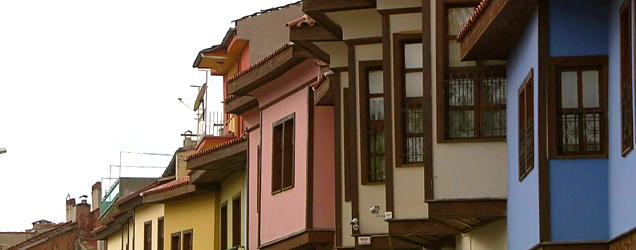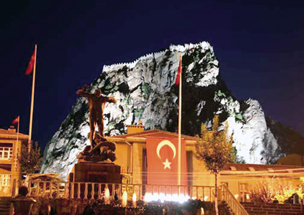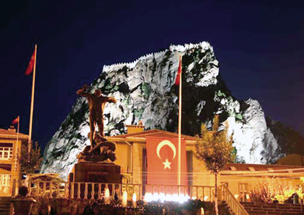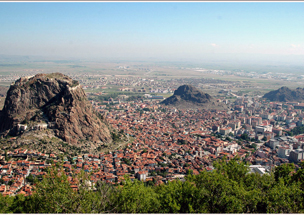UŞAK

It is understood that Uşak and the surrounding area has become open to settlement since 4000 BC. It is seen that settlements have become much more common in the Bronze Age.
Constituting the western border for the Hittites, who maintained a political union in Asia Minor for the first time in 2000 BC, and then for the Phrygians in 1000, Uşak and surroundings were dominated by the Ionian culture rather than these cultures.
Remaining under Lydia domination by majority when King Gyges became the King of Lydia in VII century, Uşak became completely dominated by Lydia in 620 BC. The domination of Lydia, the first kingdom that coined and used money and the richest kingdom of the time, continued until 546 BC. During such time, the Royal Road starting from Ephesus was built, and the road followed Gediz (Hermos) river into Güre village in Uşak city, followed by Kremon Agora city in Uşak and onwards.
With the cease of existence of the Lydian Kingdom as a result of the war between the last king of Lydia, Croesus, and the Persian King, Cyrus in 546 BC, the area became dominated by the Persians coming from Persia. Persian domination continued until 334 BC, when the area, like the entire Asia Minor, became conquered by Alexander the Great of Macedon in his campaign in Asia Minor; and after death of Alexander, the area was ruled by Antigonus, one of Alexander's generals. Remaining under Pergamon Kingdom for some time, Uşak and surroundings were dominated by Montius, the Roman Consul, in 189 BC, in other words, they were conquered by the Roman Empire; and when the Roman Empire split into two following Migration of Tribes, Uşak remained within the Eastern Roman territory and under the Byzantine rule until XII Century AD. After 1071, the area was ruled by the Seljuk and the Byzantines intermittently; and it was conquered by the Seljuks in 1176 as a result of the Battle of Myriokephalon (Kumdanlı) between the Seljuk sultan Kilij Arslan II and the Byzantine Emperor Manuel I Komnenos.
Sultan Kilij Arslan II started a new movement for conquest and conquered Uluborlu, and then surroundings of Kütahya in 1182. No doubt Uşak and surroundings were also conquered by the Seljuk during such conquest. Because the Seljuk borders came close to Denizli. Meanwhile, Sultan Kilij Arslan II divided the country among his 11 sons in 1185. As a result of such division, Kütahya-Usak-Uluborlu area was made under the rule of Ghiyath ad-Din Kaykhusraw. After such division, there was a struggle for power among the brothers. Although Ghiyath ad-Din Kaykhusraw I succeeded to make it to the throne in 1192, he was unable to eliminate his other brothers, and he was sent to exile by Suleiman Shah in 1196. Taking advantage of this struggle for power among the brothers, the Byzantine Empire took back Kütahya, Uşak and surroundings. The Byzantine Rule continued until 1233. After such date, surroundings of Uşak completely passed under Turkish control.
Uşak became a frontier town for the state during the Anatolian Seljuk State time. Following establishment of absolute Turkish rule over Kütahya and Uşak and surroundings during the reign of Sultan Ala ad-Din Kayqubad, the area became densely populated by the Turkmens. Then we see Uşak and surroundings under the rule of the Germiyanid Chiefdom; it is understood that the Germiyan Tribe settled around Malatya at the service of the Anatolian Seljuk State during the first half of XIII Century were probably encouraged to settle in and around Kütahya and Uşak during the reign of Ghiyath ad-Din Kaykhusraw or some time later, probably following the suppression of Baba Ishak revolt in 1241. Because, the fact that the Germiyanids played an active role in the Jimri (Ala ad-Din Siyavush) event reveals that this tribe had already settled around Kütahya and Uşak before the Jimri event broke out (1277). Seeming to be under the rule of the Sahip Ataids during such event, Germiyanids became the strongest chiefdom in the Western Anatolia thereafter.
Provincial Directorate of Culture and Tourism in Uşak




